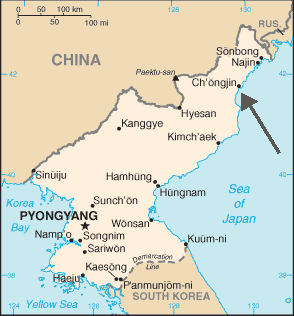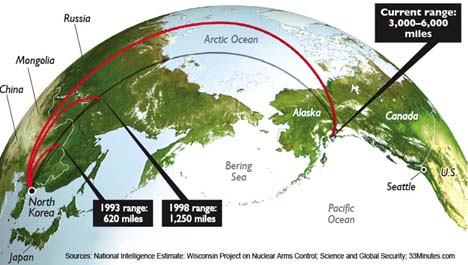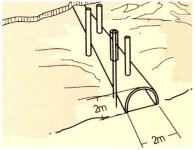Seattle Warned of 'Imminent' Nuke Attack
6/6/09
http://www.presstv.ir/detail.aspx?id=97219§ionid=3510203______________________________________
North Korea to Launch Missile that can reach US?
ABC news 6/2/09
http://abcnews.go.com/International/story?id=7732196&page=1_______________________________
US sends F-22 Raptors to Japan
5/29/09 Turner Radio NetworkOkinawa, Japan (TRN) -- As the situation with North Korea worsens, four U.S. F-22A "Raptor" stealth fighters landed Saturday at the U.S. Kadena Air Base in Okinawa for a four month deployment. Eight more are scheduled to arrive Sunday.
The base said the deployment shows the United States’ commitment to Japan and its determination to ensure stability and security in the Pacific region.
The 12 stealth fighters, from Langley Air Force Base in Virginia, can evade radar detection and cruise at supersonic speeds. In its past deployments to Kadena, the F-22A fighters engaged in joint exercises with fighter planes of Japan’s Air Self-Defense Force_____________________________
North Korea Puts Warhead on Ship
5/30/09 Turner Radio NetworkWashington, DC (TRN) -- The U.S. National Reconnaissance Office which manages United States military spy satellites, issued an alert this morning regarding North Korea.
According to the alert, which was seen by the Turner Radio Network, U.S. spy satellites code named "Misty-2" and "Lacrosse -4" detected a "diffuse energy signature" emanating from an ocean shipping container loaded onto an ocean container ship at the port of Chiongjin in northeastern North Korea.
The energy signature is one that could be expected if a nuclear bomb was inside the shipping container.
That ship has set sail into the Sea of Japan.
The vessel is now under constant satellite surveillance and the U.S. Navy is deciding what to do about it. A military officer with knowledge of the situation told TRN:
"The ship has to be stopped and inspected but we can't send any ships to put a shot across her bow, order it to heave-to and prepare to be boarded. If it is a bomb, the North Korean ship Captain may have orders to detonate it if confronted at sea. That would kill any ship trying to board her.
We can't send in attack aircraft to sink the ship without verifying what's in the shipping container.
A submarine could safely torpedo the ship to sink it before the crew could detonate a bomb - if it's a bomb -- but since North Korean nuclear technology is very unstable a torpedo might cause the bomb to detonate anyway. The sub would survive, but the radiation released by an accidental detonation will cause problems.
Even in the best case scenario, if it is a bomb and the ship is sunk without a bomb detonation, there's the whole issue of having a nuclear bomb at the bottom of the Sea of Japan. The environmental damage could be catastrophic, poisoning the ocean and killing sea life for thousands of square miles.
This is an unimaginable act by North Korea and is going to end badly for everyone."At present, the ship is heading out into the Sea of Japan. Its destination is unknown. If it is heading toward Japan, it can be within range of a major Japanese City within 2 days. If it is not heading out to Japan, it can reach the U.S. west coast in about 14 days.
_____________________________
ORIGINAL CAPTION: The range of North Korea's ballistic missiles is 5 times farther than in 1990. The Taepodong-2 could travel thousands of miles to strike Alaska, Hawaii and "parts of the continental United States," intelligence experts estimate. By testing and perfection a third stage, the North Korean could reach anywhere in North America with a nuclear warhead – in about 33 minutes. (heritage.org) posted 6/2/09 www.standeyo.com___________________________
South Korea to Buy US Missiles
5/29/09 Turner Radio NetworkWashington, DC -- (TRN) The Defense Security Cooperation Agency notified Congress of a possible Foreign Military Sale to the Government of the Republic of Korea of 46 SM-2 Block IIIA Tactical STANDARD missiles, 35 SM-2 Block IIIB Tactical STANDARD missiles, 3 SM-2 Block IIIB Telemetry Missiles, 84 SM-2 missile containers and associated test and support equipment, spare and repair parts, training, training equipment, publications and logistical support for an estimated cost of $170 million.
The Republic of Korea has requested a possible sale of 46 SM-2 Block IIIA Tactical STANDARD missiles, 35 SM-2 Block IIIB Tactical STANDARD missiles, 3 SM-2 Block IIIB Telemetry Missiles, 84 SM-2 missile containers, missile modifications, test and support equipment, spare and repair parts, personnel training and training equipment, publications and technical data, U.S. Government and contractor technical assistance and other related logistics support.
The estimated cost is $170 million.
The proposed sale will enhance the Republic of Korea’s defensive capabilities and increase interoperability with U.S. and multi-national forces supporting coalition operations. The country already has these missiles in its inventory and will have no difficulty absorbing these items.
The prime contractor will be Raytheon Electronic Systems Company in Tucson, Arizona.
At this time, there are no known offset agreements in connection with this potential sale.
Implementation of this proposed sale will require temporary travel for U.S. Government or contractor representatives to the Republic of Korea for in-country training. Training will be a recurring requirement during the life of the missile system.
There will be no adverse impact on U.S. defense readiness as a result of this proposed sale.
This notice of a potential sale is required by law. It does not mean that the sale has been concluded.
Official Announcement________________________________
Tunnels Demonstrate North's Intent to Invade South Korea
5/29/09 Turner Radio NetworkAccording to north Korean defectors, Kim Il-Sung -- president of the Democratic People's Republic of Korea -- issued a sweeping order in the early 1970s that required every Korean People's Army division along the Demilitarized Zone (DMZ) to dig and maintain at least two tunnels into South Korea. The opposing United Nations Command had been aware of an earlier north Korean tunneling effort that never became an actuality, but was surprised when new evidence came up that indicated the north was hard at work underground again.
On November 15, 1974 while in operation in the western DMZ near Korangpo, allied reconnaissance troops found steam rising from the earth's surface indicating that a tunnel was present underneath the DMZ. The tunnels depth is believed to be some 45 meters, has a total length of 3,500 meters of which 1,000 meters invaded into the DMZ. The tunnel is along a course that would have exiting soldiers heading towards Korango, Uijongbu and is some 65 km from Seoul, 8 km northeast of Korangpo. It has a prefabricated wall of concrete and slate. When discovered, there were 220-volt and 60-watt lamps, electric lines, railways, and track vehicles. The ground is inclined by 5 degrees to the north to prevent water from gathering. There are turning points on the railroad. The tunnel is large enough to allow the transit of a regiment of troops and heavy artillery every hour.
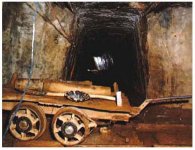
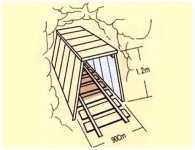
On March 19, 1975 a second tunnel was discovered following the testimony of Kim Bu-sung, former official of the Liaison Bureau of the Workers' Party of North Korea, who participated in the construction of underground tunnels and defected to the South in 1974. The South Korean Army analyzed the sound of underground explosions which started to be heard in Cholwon in 1972, and examined suspected sites. The arch-shaped tunnel is double the size of the 1st Underground Tunnel. There is a plaza where troops gather, and three exits which were to be used for both conventional and unconventional warfare. The tunnel is located some 13 km north of Cholwon and is 101 km from Seoul. It has a total length of 3,500 meters and is 50-160 meter below the surface. About 3,000 armed troops and their vehicles, artillery and tanks can pass per hour.
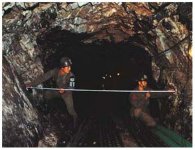
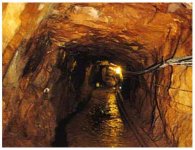
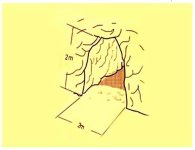
On October 17, 1978 a third tunnel was discovered following th e 1975 testimony of defector Kim Bu-sung. Initial efforts to discover the tunnel failed until June 10, 1978, when an excavation hole was exploded, they started to dig a counter-tunnel which later reached the North's tunnel on October 17, 1978. It is about the same size as the 2nd Underground Tunnel, but would have been the most threatening tunnel if the North had used it to invade Seoul. According to Kim Bu-sung, North Korea planned to make five southern exits. Normally one or two were to be used, but in a decisive stage all were to be put into use. It was designed for both conventional warfare and guerrilla infiltration. The tunnel is 4 km south of Panmunjom and 44 km from Seoul. It is 73 meters underground and roughly 1,635 meters long. About 30,000 ranked, heavily-armed troops can pass per hour.
After detecting the sound of underground motors in May of 1989, the Army started excavation work using state-of-the-art reconnaissance devices developed by the Korean Institute for Science and Technology. They sent electric waves through antennas, which were put through excavation halls driven every 20 meters. Analyzing the transformation of the waves, they were able to pinpoint the tunnel's location as well as determine its size. Twenty-three days after they started digging, the counter-tunnel reached the North Korean tunnel. Forty-five Korean and foreign journalists were present at the scene of discovery of the fourth tunnel on March 3, 1990. The tunnel is 145 meters below the surface and is 2,052 meters long. It is located 26 km northeast of Yangku. The tunnel could allow the transit of some 30,000 soldiers per hour.
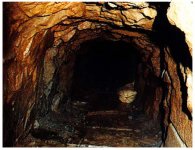

______________________________
North Korean Military Tactics: Total War
By: Han Ho Suk
Director, Center for Korean Affairs
NOTE: ORIGINALLY PUBLISHED IN LATE 2003
North Korea has not only the military power but also the political will to wage total war against the United States.
(An English abstract of a paper)
1. North Korea Can Engage the US in Total War
North Korea is one of the few nations that can engage in a total war with the United States. The US war planners recognize this fact. For example, on March 7, 2000, Gen. Thomas A Schwartz, the US commander in Korea at the time, testified at a US congressional hearing that "North Korea is the country most likely to involve the United States in a large-scale war."
North Korea, which can and is willing to face up to the sole military superpower of the world, cannot be called a weak nation. Nevertheless, Western press and analysts distort the truth and depict North Korea as an "impoverished" nation, starving and on the brink of imminent collapse. An impoverished, starving nation cannot face down a military superpower. Today few nations have military assets strong enough to challenge the US military. Russia, though weakened by the collapse of the Soviet Union, has enough assets to face up to the US. China, somewhat weaker than Russia, too, has strong military that can challenge the US. However, both Russia and China lack the political will to face down the US.
In contrast, North Korea has not only the military power but also the political will to wage total war against the United States. North Korea has made it clear that it will strike all US targets with all means, if the US mounted military attacks on North Korea. That North Korea's threat is no bluff can be seen from the aggressive actions taken by North Korea since the Korean War armistice, most recent of which is North Korea's attempt to capture an American spy plane. In the morning of March 1, 2003, an American RC-132S spy plane, Cobra Ball, took off from a US airbase in Okinawa, and cruised along the East coast of North Korea collecting electronic signals. The US intelligence suspected that North Korea was about to test a long-range missile and the plane was there to monitor the suspected missile launch.
When the US plane reached a point about 193 km from the coast of North Korea, two MiG-29 and two MiG-21 fighter planes showed up unexpectedly. The North Korean planes approached within 16 m and signaled the US plane to follow them. The US pilot refused to follow the command and left the scene posthaste. The US plane was tailed by the hostiles for about 22 min but let the US spy plane go. There are two key points to be observed here.
First, the hostile planes waited for the US plane at the Uhrang airbase, located about 200 km from the point of air encounter. They knew that the US plane was coming. The North Korean planes flew 200 km to intercept the US plane. Did the US plane see them coming? If it did, why no evasive action? After intercepting the US plane, the hostile planes dogged it for 22 min. Why no American planes for the rescue? The US crew must have informed the base of the danger they were in, but no action was taken by the base. If Kim Jong Il had given the command, the MiGs would have shot down the US plane and returned to their base before the US could have scrambled war planes.
Second, North Korea intercepted an American spy plane flying 200 km from its coast. According to the international norm, a nation's territorial air space extends 19 km from its coast line. The US is the exception and claims air space of 370 km from its coast line; any foreign airplane violating this extended air space is challenged or shot down by the US military.
2. North Korea's Massive Retaliation Strategy
North Korea's war plan in case of an US attack is total war, not the 'low-intensity limited warfare' or 'regional conflict' talked about among the Western analysts. North Korea will mount a total war if attacked by the US. There are three aspects to this war plan.
First, total war is North Korea's avowed strategy in case of US preemptive attacks. The US war on Iraq shows that the US can and will mount preemptive strikes in clear violation of international laws, and the United Nations is powerless to stop the US. Any nation that is weak militarily may be attacked by the US at will. It is reasonable for North Korea to deter US attacks with threats of total war.
Second, North Korea expects no help from China, Russia, or other nations in case of war with the US. It knows that it will be fighting the superpower alone. Nominally, China and Russia are North Korea's allies but neither ally is expected to provide any assistance to North Korea in case of war. Neither nation can or is willing to protect North Korea from attacks by the US, and North Korea alone can and will protect itself from US attacks. This principle of self-defense applies to all nations.
Third, North Korea's total war plan has two components: massive conventional warfare and weapons of mass destruction. If the US mounts a preemptive strike on North Korea's Yongbyon nuclear plants, North Korea will retaliate with weapons of mass destruction: North Korea will mount strategic nuclear attacks on the US targets. The US war planners know this and have drawn up their own nuclear war plan. In a nuclear exchange, there is no front or rear areas, no defensive positions or attack formations as in conventional warfare. Nuclear weapons are offensive weapons and there is no defense against nuclear attacks except retaliatory nuclear attacks. For this reason, North Korea's war plan is offensive in nature: North Korea's war plan goes beyond repulsing US attackers and calls for destruction of the United States.
The US war plan '5027' calls for military occupation of North Korea; it goes beyond the elimination of North Korea's weapons of mass destruction. The US military regards North Korea its main enemy and likewise North Korea regards the US its main enemy. South Korea, too, regards North Korea its main enemy but North Korea does not regard South Korea its main enemy because South Korea is a client state of the United States and has no ability or power to act independent of the US. North Korea's war plan is not for invading South Korea but for destroying the US.
3. North Korea's Military Capability
All nations keep their military capability secret. North Korea is no exception and it is not easy to assess North Korea's military power. The US claims that it knows North Korea's military secrets. The United States collects intelligence on North Korea using a variety of means: American U-2, RC-135, EP-3 and other high-altitude spy planes watch over North Korea 24 hours 7 days a week. The US 5th Air Reconnaissance Squadron has U-2R, U-2S, and other advanced spy planes at the Ohsan airbase in South Korea. In addition, the US has 70 KH-11 spy satellites hovering over North Korea.
In spite of such a massive deployment of intelligence collection assets, the US intelligence on North Korea is faulty at best. Donald Gregg, a former US ambassador to Seoul and a 30-year CIA veteran, has admitted that the US intelligence on North Korea has been the longest lasting story of failure in the annals of US intelligence. Gregg said that even the best spy gadget in the US arsenal cannot read what's on Kim Jong Il's mind. US Secretary of Defense Rumsfeld said that North Korea uses underground optical fibers for military communication and that it is nearly impossible to plant human agents in North Korea.
Although North Korea's military secrets are impervious to US spy operations, one can draw some general pictures from information available in the public domain.
a) North Korea makes its own weapons
North Korea has annual production capacity for 200,000 AK automatic guns, 3,000 heavy guns, 200 battle tanks, 400 armored cars and amphibious crafts. North Korea makes its own submarines, landing drafts, high-speed missile-boats, and other types of warships. Home-made weaponry makes it possible for North Korea to maintain a large military force on a shoestring budget. North Korea defense industry is made of three groups: weapon production, production of military supplies, and military-civilian dual-use product manufacturing.
North Korea has 17 plants for guns and artillery, 35 plants for ammunition, 5 plants for tanks and armored cars, 8 plants for airplanes, 5 plants for warships, 3 plants for guided missiles, 5 plants for communication equipment, and 8 plants for biochemical warheads - 134 plants in total. In addition, many plants that make consumer products are designed so that they can be made to produce military items with minimum modification. About 180 of defense related plants are built underground in the rugged mountainous areas of Jagang-do. Several small to medium hydro-power plants serve these plants so that it would be nearly impossible for the US to cut off power to the plants.
b) North Korea has its own war plans
North Korea is mountainous and its coasts are long and jagged. The Korean peninsula is narrow on its waste. North Korea's weapons and war tactics are germane to Korea's unique geography. North Korea has developed its own war plans unique to fighting the US in a unique way. North Korea's military is organized into several independent, totally integrated and self-sufficient fighting units, that are ready for action at any time.
c) North Korean soldiers are well indoctrinated
The US commanders admit that North Korean soldiers are highly motivated and loyal to Kim Jong Il, and that they will fight well in case of war. Karl von Clausewitz said that people's support for war, military commanders' ability and power, and the political leadership are the three essentials for winning war. He failed to include the political indoctrination of the soldiers, which is perhaps more important than the other factors cited.
During the Iraq War just ended, the main cause of Iraq's defeat was the low moral of its soldiers. Iraqi soldiers had no will to stand and fight, and they ran away or surrendered without fight. Iraqi soldiers believed in Allah protecting them and became easy preys to the US military. North Korean soldiers are taught to fight to the bitter end. In September 1996, a North Korean submarine got stranded at Kangrung, South Korea, and its crew abandoned the ship. Eleven of the crew committed suicide and the rest fought to the last man except one who was captured. In June 1998, another submarine got caught in fishing nets at Sokcho and its crew killed themselves. Such is the fighting spirit of North Korean soldiers.
d) North Koreans are combat ready
One cannot fight war without military preparedness. North Korea's regular army is for offensive actions whereas its militias are homeland defense. North Korea's regular army consists of 4 corps in the front area, 8 corps in the rear area, one tank corps, 5 armored corps, 2 artillery corps, and 1 corps for the defense of Pyongyang, South Korea has 19 infantry divisions whereas North Korea has 80 divisions and brigades.
A North Korean infantry division has 3 infantry regiments, 1 artillery regiment (3 battalions of 122 mm rocket launchers and 1 battalion of 152 mortars), one tank battalion of 31 tanks, one anti-tank battalion, one anti-aircraft battalion, one engineer battalion, one communication battalion, one light-infantry battalion, one recon battalion, and one chemical warfare battalion.
North Korea's militias consist of 1.6 million self-defense units, 100,000 people's guards, 3.9 million workers militia, 900,000 youth guard units. These militias are tasked to defend the homeland. The militias are fully armed and undergo military trainings regularly.
i) Artillery
North Korea has 2 artillery corps and 30 artillery brigades equipped with 120mm self-propelled guns, 152mm self-propelled mortars, 170mm guns with a range of 50 km, 240 mm multiple rocket launchers with a range of 45 km, and other heavy guns. North Korea has about 18,000 heavy guns. North Korea's 170mm Goksan gun and 240mm multiple-tube rocket launchers are the most powerful guns of the world. These guns can lob shells as far south as Suwon miles beyond Seoul. The big guns are hidden in caves. Many of them are mounted on rails and can fire in all directions. They can rain 500,000 conventional and biochemical shells per hour on US troops near the DMZ. The US army bases at Yijong-bu, Paju, Yon-chun, Munsan, Ding-gu-chun, and Pochun will be obliterated in a matter of hours.
The US army in Korea is equipped with Paladin anti-artillery guns that can trace enemy shells back to the guns and fire shells at the enemy guns with pin-point accuracy. However, it takes for the Paladins about 10 min to locate the enemy guns, during which time the Paladins would be targeted by the enemy guns Gen. Thomas A Schwartz, a former US army commander in Korea, stated that the US army in Korea would be destroyed in less than three hours.
ii). Blitz Klieg
North Korea has tanks, armored cars, and self-propelled artillery for blitz klieg. North Korea has one tank corps and 15 tank brigades. The tank corps has 5 tank regiments, each of which has 4 heavy tank battalions, 1 light-tank battalion, one mechanized infantry battalion, 2 self-propelled artillery battalions.
US tanks are designed to operate in open fields. In 1941, Rommel of Germany defeated British troops in North Africa with tanks. The largest tank battle was fought at Kursk in 1943, in which the Soviets defeated Germans. In 1973, Egypt defeated Israeli tanks with anti-tank missiles. All of these tank battles were fought in open fields. The Gulf War and the recent war in Iraq saw US tanks in open fields. American and Western tank commanders do not know how to fight tank battles in rugged terrains like those of Korea. Tank battles in Korea will be fought on hilly terrains without any close air cover, because North Korean fighters will engage US planes in close dog fights.
North Korea has developed tanks ideally suited for the many rivers and mountains of Korea. These tanks are called "Chun-ma-ho", which can navigate steep slopes and cross rivers as much as 5.5 m deep. North Korea's main battle tanks - T-62s - have 155 mm guns and can travel as fast as 60 km per hour. The US main tanks - M1A - have 120 mm guns and cannot travel faster than 55 km per hour. North Korean tanks have skins 700 mm thick and TOW-II is the only anti-tank missile in the US arsenal that can penetrate this armored skin.
North Korea began to make anti-tank missiles in 1975 and has been improving its anti-tank missiles for the past 30 years. North Korea's anti-tank missiles are rated the best in the world and several foreign nations buy them. The US army in Korea relies on 72 AH-64 Apache attack helicopters to kill North Korean tanks. Each Apache has 16 Hell-Fire anti-tank missiles. As shown in the recent Iraq war, Apaches are fragile and can be easily shot down even with rifles. North Korea has about 15,000 shoulder-fired anti-air missiles ("wha-sung") and Apaches will be easy targets for wha-sung missiles. On December 17, 1994, a wha-sung missile brought down an American OH-58C spy helicopter which strayed north of the DMZ.
North Korea has 4 mechanized corps and 24 mechanized brigades. Each brigade has 1 tank battalion (31 tanks), 1 armored battalion (46 armored cars), 4 infantry battalions, one 122mm battalion (18 guns), one 152 mm battalion (18 guns), one anti-aircraft battalion (18 guns), anti-tank battalion (9 armored cars with anti-tank missiles and 12 anti-tank guns), one armored recon company (3 light armored cars, 7 armored cars, and 8 motor-cycles), one mortar company (6 mortars), one engineer company, one chemical company, and one communication company. The US army has A-10 attack planes to counter North Korea's mechanized units. In case of war, the skies over Korea will be filled with fighters in close dog-fights and the A-10s would be ineffective.
The bulk of North Korea's mechanized and tank units are positioned to cross the DMZ at a moment's notice and run over the US and South Korean defenders. The attackers will be aided by SU-25 attack planes and attack helicopters. In addition, North Korea has 600 high-speed landing crafts, 140 hovercrafts, and 3,000 K-60 and other pontoon bridges for river-crossing. North Korea has 700,000 troops, 8,000 heavy guns, and 2,000 tanks placed in more than 4,000 hardened bunkers within 150 km of the DMZ.
iii. Underground Tunnel Warfare
North Korea is the world most-tunneled nation. North Korea's expertise in digging tunnels for warfare was demonstrated during the Vietnam War. North Korea sent about 100 tunnel warfare experts to Vietnam to help dig the 250 km tunnels for the North Vietnamese and Viet Gong troops in South Vietnam. The tunnels were instrumental in the Vietnamese victory.
North Korea's army runs on company-size units. Tunnel warfare is conducted by independent company-size units. Tunnel entrances are built to withstand US chemical and biological attacks. Tunnels run zig-zag and have seals, air-purification units, and safe places for the troops to rest. It is believed that North Korea has built about 20 large tunnels near the DMZ. A large tunnel can transport 15,000 troops per hour across the DMZ and place them behind the US troops.
iv. Special Forces
North Korea has the largest special forces, 120,000 troops, in the world. These troops are grouped into light infantry brigades, attack brigades, air-borne brigades, and sea-born brigades - 25 brigades in total. These troops will be tasked to attack US military installations in Korea, Japan, Okinawa and Guam.
North Korea has the capacity to transport 20,000 special force troops at the same time. North Korea has 130 high-speed landing crafts and 140 hovercrafts. A North Korean hovercraft can carry one platoon of troops at 90 km per hour. Western experts pooh-pooh North Korea's ancient AN-2 transport planes as 1948 relics, but AN-2 planes can fly low beneath US radars and deliver up to 10 troops at 160 km per hour. North Korea makes AN-2s and has about 300 in place. In addition, North Korea has hang-gliders that can carry 5-20 men each for short hops.
North Korea has developed special bikes for mountain warfare. Special forces use these bikes for fast deployments on mountains. Switzerland is the only other nation that has bike-mounted special forces trained for mountain warfare. The rugged terrains of the Korean Peninsula are ideally suited for special forces operations. North Korea's special forces will attack US targets in Japan, Okinawa, and Guam as well. Japan's self defense units are being reorganized to counter this threat.
How good are North Korea's special forces? In September 1996, a North Korean submarine was stranded near Kang-nung and the crew were forced to abandon the ship and land on South Korea. The sub had two special forces agents who had finished a mission in South Korea and were picked up by the sub before the sub ran into a rock. The two men fought off an army of South Korean troops and remained at large for 50 days, during which they killed 11 of the pursuers.
4. Weapons of Mass Destruction
a. Missile Readiness
North Korea is a nuclear state along with the US, Russia, China, the Great Britain, France, India, Pakistan, and Israel. North Korea has succeeded in weaponizing nuclear devices for missile delivery. North Korea has operational fleets of ICBM and intermediate-range missiles equipped with nuclear warheads. I have written on this subject previously and will not replicate the details here.
It was May of 1994, nine years ago, when the US military planners had first realized that North Korea had the bomb and devised nuclear attack plans under William Perry, the then US Secretary of Defense. Perry had estimated that North Korea would have about 100 nuclear warheads by 2000. Dr. Kim Myong Chul, an expert on Kim Jong Il's war plans, has recently confirmed that North Korea has more than 100 nukes including hydrogen bombs.
North Korea can produce about 100 missiles a year. It began to make missiles in 1980 and has about 1,000 missiles of various types in place, about 100 of which have nuclear warheads. These missiles are hidden in caves and underground launching pads. At present, the US has no fool-proof defense against North Korean missiles, and in case of war, North Korean missiles can do serious damages: several hundreds of thousands of US troops will die, and scores of US bases and carrier battle groups will be destroyed. The Patriot anti-missile missiles are deployed in South Korea but as shown in the recent Iraq war, the Patriots are not 100% accurate or reliable even under ideal conditions.
b. Biochemical Warfare
North Korea has a large stockpile of biochemical weapons. Each Army corps has a chemical company and each regiment has a chemical platoon. In the May 1994 nuclear crisis, Perry warned North Korea that the US would retaliate with nuclear weapons if North Korea used chemical weapons on US troops.
North Korean troops and citizens are well-prepared for bio-chemical attacks.
5. North Korea's Defense Against US Attacks
a. Fortification
North Korea began to build fortifications in 1960s. All key military facilities are built underground to withstand American bunker-buster bombs. North Korea has 8,236 underground facilities that are linked by 547 km of tunnels. Beneath Pyongyang are a huge underground stadium and other facilities. About 1.2 million tons of food, 1.46 million tons of fuel, and 1.67 million tons of ammunition are stored in underground storage areas for wartime use.
Most of the underground facilities are drilled into granite rocks and the entrances face north in order to avoid direct hits by American bombs and missiles. The B-61 Mod 11 is the main bunker buster in the US arsenal. A recent test showed that this buster could penetrate only 6 meters of rock. The latest GBU-28 laser-guided bunker-buster can penetrate to 30m. North Korean bunkers have at least 80 m of top-cover of solid rocks. North Korea has many false caves that emit heats that will misdirect unwary GBU-28/37 and BKU-113 bunker-busters.
The US military targets enemy command and control centers based on the doctrine of chopping off "the head of the snake." With the top commanders eliminated, the rank and file would be demoralized, leaderless and would surrender. North Korea's extensive underground fortification makes this strategy unworkable. In addition, the underground facilities make US spy planes and satellites impotent.
b. Air Defense
North Korea has a large number of ground-to-air missiles. It has SA-2 and SA-3 missiles against low-flying enemy planes, and SA-5 missiles for high-altitude planes. SA-5 missiles have an effective range of 250 km. SA-5 missiles can hit enemy planes flying over the middle of South Korea.
North Korea has reengineered US shoulder-fired anti-aircraft missiles captured in Vietnam, and designed its own missile, wha-sung. North Korea began to manufacture wha-sung missiles in 1980. Wha-sung comes in two models: SA-7 that has an effective range of 5 km and SA-16 with 10 km range. North Korea has more than 15,000 wha-sung missiles in place.
In addition to the missiles, North Korea has 12,000 anti-aircraft guns, including 37mm twin-barrel guns, 23 mm automatics, 57mm, 87mm, and 100mm heavy guns. These are mostly manually operated and thus not subject to electronic warfare.
c. Coastal deferens.
North Korea's coastlines are long and jagged. Coastal guns are placed in fortified tunnels along the coastline. North Korea has six ground-to-ship missile bases. North Korea has anti-ship missiles of 95km range, and of 160km range. The latter are for hitting US carrier battle groups over the horizon. North Korean anti-ship missiles can hit ships anchored at Inchon on the west and Sokcho on the east.
America's main defense against anti-ship missiles, the Arleigh Burke class Aegis destroyers are ineffective outside 20-50 km from missile launch pads.
d. Sea Battles
North Korea has two fleets - the West Fleet and the East Fleet. The West Fleet has 6 squadrons of 320 ships and the East Fleet has 10 squadron of 460 ships. The navy has a total manpower of 46,000. North Korean ships are sheltered from US attacks in about 20 bunkers of 200-900 m longs and 14-22 m wide. North Korean ships are small and agile, designed for coastal defense. North Korean ships carry 46km range ship-to-ship missiles and 22-channel multiple rocket launchers.
The main enemy of the North Korean navy will be US carrier task forces. The Russian navy has developed a tactic to deal with US carriers task forces: massive simultaneous missile attacks. In addition, Russia has developed the anti-carrier missile, "jun-gal", that can destroy a carrier. China has developed similar tactics for destroying US carriers. On April 1, 2003, North Korea test-fired a high-speed ground-to-ship missile of 60km range. A US carrier task force of Nimitz class has 6,000 men, 70 planes, and a price tag of 4.5 billion dollars. Destroying even a single career task force will be traumatic.
A carrier is protected by a shield of 6 Aegis destroyers and nuclear attack submarines. An Aegis destroyer has an AN/SPY-1 high-capacity radar system that can track more than 100 targets at the same time. An Aegis can fire about 20 anti-missile missiles at the same time. Thus, a career force can track a total of 600 targets at a time and fire 120 anti-missile missiles at the same time. The anti-missile missiles have about 50% success under ideal conditions. In actual battle situations, the hit rate will be much lower and the best estimate is that the Aegis shield can intercept at most 55 incoming missiles. Therefore, a volley of about 60 missiles and rockets will penetrate the Aegis shield and hit the career.
North Korea acquired OSA and KOMAR high-speed missile boats in 1968, and began to build its own missile boats in 1981. It has more than 50 missile boats, each equipped with 4 missiles of 46km range and multiple rocket launchers. In addition, North Korea has about 300 speed boats, 200 torpedo boats and 170 other gunboats. In case of war, North Korea's small crafts and submarines will swarm around US career task forces and destroy them.
North Korea has 35 submarines and 65 submersibles. These crafts are equipped with torpedoes and will be used to attack US careers. They will also lay mines and block enemy harbors. North Korea has a large supply of mines. North Korean submarines are small but they are equipped with 8km rocket launchers and 70km anti-ship missiles, and they could do some serious damage to US careers..
e. Air Combats
North Korea has three air commands. Each command has a fighter regiment, a bomber regiment, an AN-2 regiment, an attack helicopter regiment, a missile regiment, and a radar regiment. Each command can operate independently. North Korea has 70 airbases, which are fortified against US attacks. Underground hangars protect the planes and have multiple exits for the planes to take off on different runways. North Korea has several fake airfields and fake planes to confuse US attackers.
It is said that North Korea's planes are obsolete and no match for US planes. North Korea has 770 fighters, 80 bombers, 700 transports, 290 helicopters, and 84,000 men. In case of war, North Korean planes will fly low hugging the rugged terrains and attack enemy targets. US planes are parked above ground at bases in Korea, Japan, Okinawa and Guam, and make easy targets for missile, rocket and air attacks. When war breaks out, North Korean missiles, rockets and heavy guns will destroy the 8 US airbases in South Korea, and any plane in the air would have no place to land.
North Korea's fighter planes are ill-equipped for air-to-air combats at long distances. but they can hold their own in close-quarter air combats. MiG-21 fighters from Bongchun and US F-15 from Ohsan would meet in less than 5 min, assuming they took off at about the same time. In about 5 min, hundreds of MiG21s and F-15s would be swirling in the skies over Korea. Ground-to-air missiles and air-to-air missiles would have hard time telling friends from foes. F-15Es are equipped with a radar system that lock on at 180 km for large objects and 90 km for small objects. Sidewinder missiles have an effective range of 16km, AMRAAM missiles of 50km, and Sparrow of 55km.
Korea is 100 km wide and 125 km long, and so US air-to-air missiles would be of limited use and effectiveness, because North Korean MiGs would approach the US planes in close proximity and commingle with US planes, and air-to-air missiles will become useless and machines guns will have to be used. MiG19s have 30mm guns, MiG21s have 23mm guns, and F-14s have 20mm Valkans. North Korean pilots are trained to hug the enemy planes so that air-to-air missiles cannot be used. In contrast, US pilots are trained to lock on the enemy at long distance with radar and fire missiles. US planes are heavily armed with electronics and less agile than the light, lean MiGs that can climb and turn faster than the US planes.
F-14s are about 3.3 times heavier than MiG21s, and F-150Es are about 3.6 times heavier. MiG21s are 16.6 m long whereas F-14s are 19.1 m and F-15Es 19.43 m long. MiG21s cab climb to 18km, whereas F-1A can climb to 15.8 km and F-16 to 15.2 km. MiGs get upper hands in close-range dogfights in which agility matters. In Vietnam, US planes were forced to jettison auxiliary gas tanks and bombs in order to engage MiGs. F-150 E planes will carry BLU-113 bunker busters that weigh 2,250 kg each in the next war in Korea. Loaded with such a heavy bomb, F-15s will become easy targets for North Korea's MiGs. US fighter-bombers will be protected by F-15C fighter escorts.
MiG21s are North Korea's main workhorse. The MiG21 debuted in 1965 in Vietnam and proved itself as an effective attack fighter. In 1999, North Korea bought 40 MiG21s from Kazakhstan. During the Vietnam War, MiG17s shot down dozens of American planes. North Korea sent more than 200 pilots to fight in the Vietnam War. They were tasked to defend Hanoi and shot down scores of US planes. North Korea sent 25 pilots to Syria during the 3rd Arab-Israeli war of 1966, and 30 pilots to Egypt and Syria during the 4th Arab-Israeli war of 1973. In 1976, North Korea sent more than 40 pilots to Syria.
f. Electronic Warfare
The United States excels in electronic warfare and no nation comes anywhere near the US capability. North Korea began developing its own electronic warfare methods in 1970. It is believed that North Korea has advanced electronic warfare ability. It has numerous counter measures for US electronic warfare. During the recent war in Iraq, the US dropped e-bombs that disabled the Iraqi electronic devices. North Korea relies heavily on non-electronic command and control means, and hence US e-bombs will have limited impacts in North Korea.
North Korea trains about 100 hackers a year and has computer virus battalions in place. These hackers are capable of interrupting US communication networks. In a war game conducted in 1991 by US war planners, North Korea came out the victor with and without nuclear weapons. Kim Jong Il has no doubt that his army can beat the US army.
6. US Military Defeats in the Past
Military power dictates the outcome of war. In assessing the next war in Korea, the military power of the opponents must be examined objectively. Until now, North Korea's military power has not been properly studied. In general, Western experts tend to underestimate North Korea's military strength. Politicians in America and South Korea play down North Korean threats for political reasons.
It has been said that North Korean army is large in numbers but their equipment are obsolete, and hence it is a weak army. The US war planners assess North Korean army using computer simulations of war in Korea. US war plan for the recent Iraq war was refined using more than 40 computer-simulated wars in Iraq. The computer simulation models use weapon system features among other factors to determine the outcome.
It is true that the advanced weapons were instrumental in the US victory in the Gulf War, Yugoslavia, Afghanistan, and Iraq. On the other hand, the US army was defeated by ill-equipped foes in Korea and Vietnam. The latter two wars show that superior weapons do not always lead to a victory. North Korean and Chinese forces in Korea and the Vietnamese forces fought with superior tactics and stronger fighting fighting spirits.
In the next war in Korea, the US army will face an enemy much more determined and better equipped than the army in the Korean War of 1950-53.Posted 5/29/09 Turner Radio Network
